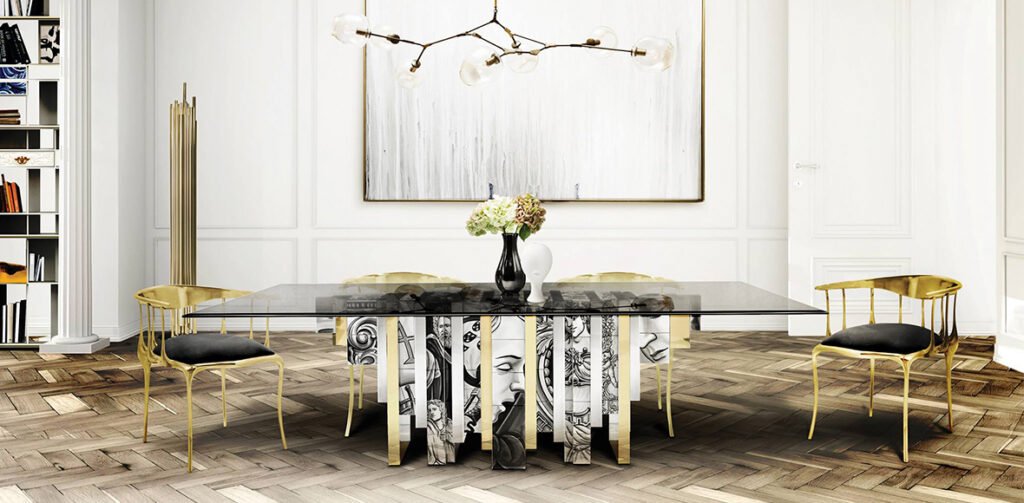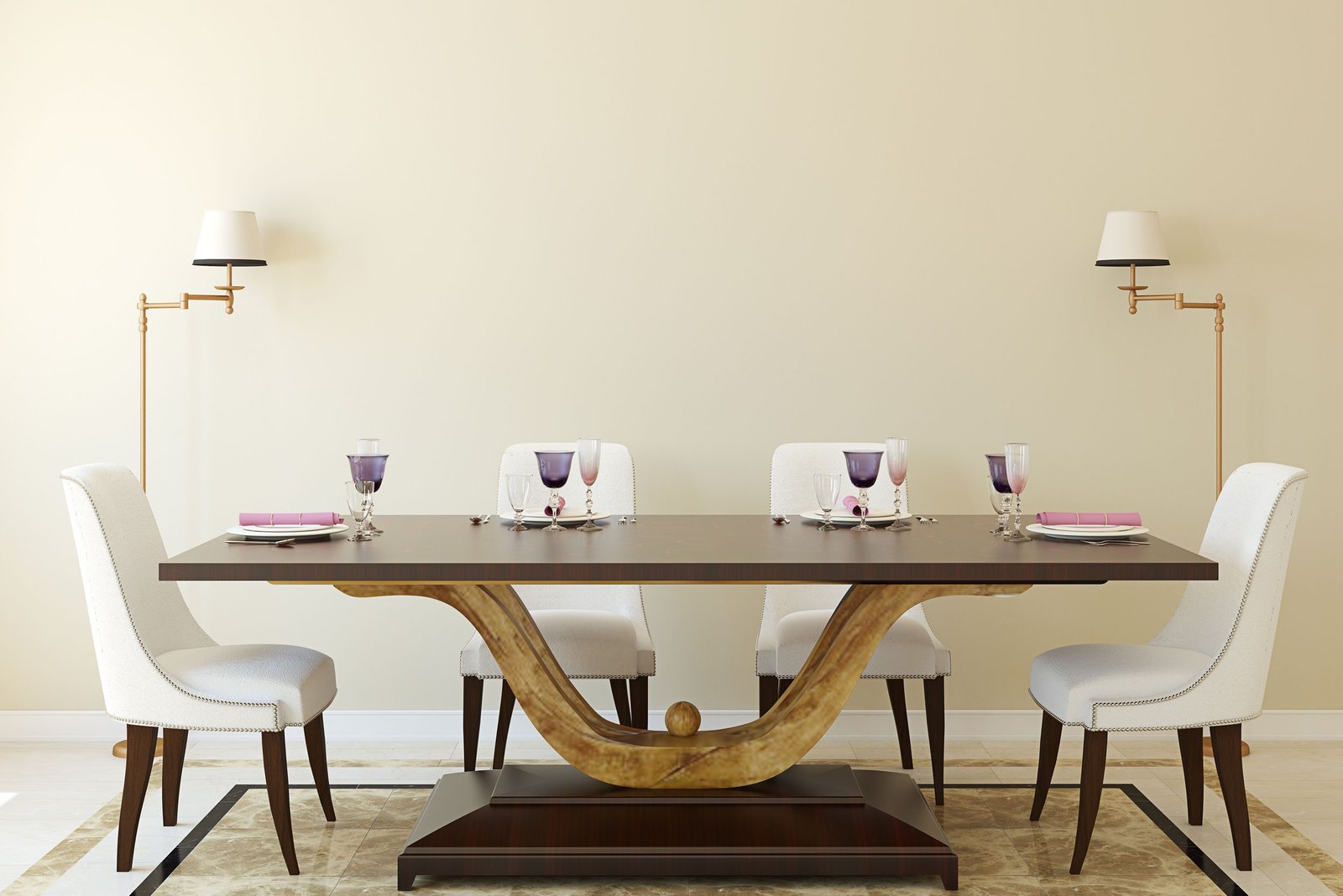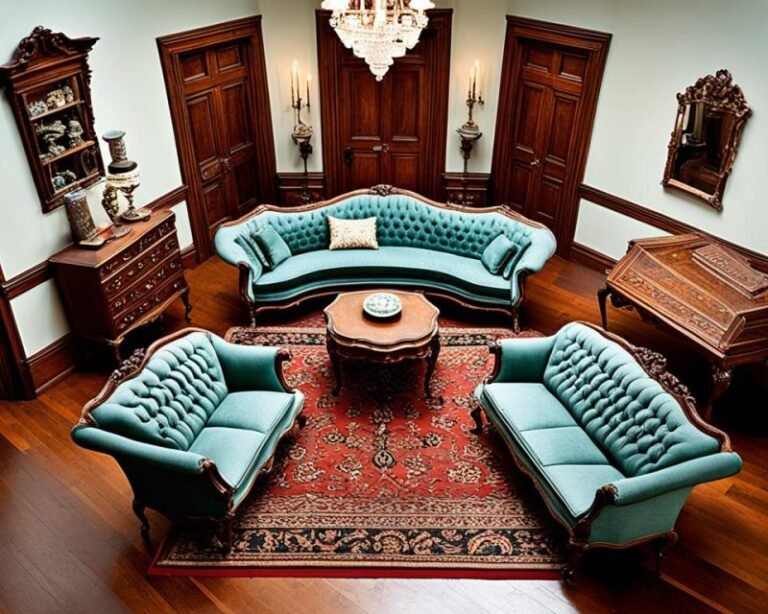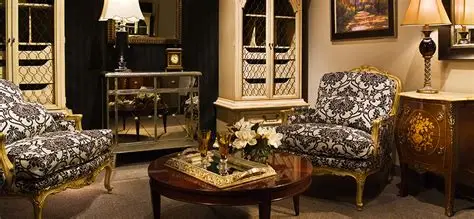
How to Choose the Perfect Dining Table
Selecting the right dining table is a significant decision in creating a functional and stylish dining space. The perfect table not only complements your home’s aesthetic but also accommodates your family’s needs. This guide will walk you through the essential factors to consider when choosing a dining table that suits your space, lifestyle, and design preferences.

1. Define the Function of Your Dining Space
Before diving into styles and materials, consider how you plan to use your dining table. Will it be for casual family meals, formal entertaining, or multi-purpose activities like working from home or children’s crafts? Understanding its primary function will help determine the appropriate size, shape, and features. For instance, if you frequently host gatherings, an extendable table might be ideal. If the table doubles as a workspace, durability and easy maintenance become priorities.
2. Determine the Right Size
Choosing the correct size ensures comfort and flow within your dining area. Measure your space and allow for at least 90 cm (35 inches) of clearance on all sides of the table to facilitate easy movement and chair access. A standard dining table height ranges from 71 to 81 cm (28 to 32 inches). When selecting a table size, consider the number of people you typically host and the available space to ensure a balanced and functional setup.
3. Select the Appropriate Shape
The shape of your dining table should complement the layout and size of your room:
-
Rectangular Tables: Versatile and ideal for larger spaces, accommodating more guests and offering a traditional look.
-
Round Tables: Perfect for smaller rooms, promoting conversation and a more intimate dining experience.
-
Square Tables: Suitable for square rooms, providing symmetry and a cozy atmosphere.
-
Oval Tables: Offer the benefits of a rectangular table without sharp corners, making them safer for children and better for traffic flow.
4. Choose the Right Material
The material of your dining table affects its durability, maintenance, and aesthetic appeal:
-
Wood: Offers warmth and timeless appeal. Hardwoods like oak, walnut, and maple are durable and age beautifully.
-
Glass: Creates an airy, modern look and is easy to clean but may require more maintenance to keep fingerprints and smudges at bay.
-
Marble: Adds luxury and elegance but can be prone to staining and scratching if not properly sealed.
-
Metal: Provides a sleek, industrial feel and is highly durable, often used in modern and contemporary designs.
Consider your lifestyle and maintenance preferences when selecting the material.
5. Match the Style to Your Home
Your dining table should harmonize with the overall style of your home:
-
Modern: Clean lines, minimalist designs, and materials like glass and metal.
-
Traditional: Classic designs with rich wood finishes and intricate details.
-
Rustic: Natural wood with a weathered or reclaimed look, often paired with vintage or farmhouse elements.
-
Industrial: Raw materials like metal and wood, with a utilitarian and unfinished aesthetic.
Select a style that complements your existing décor and reflects your personal taste.
6. Consider Additional Features
Depending on your needs, you might want to look for tables with added functionalities:
-
Extendable Tables: Ideal for accommodating additional guests during holidays or special occasions.
-
Storage Options: Tables with built-in storage can help keep dining essentials organized and within reach.
-
Multi-Functional Designs: Some tables are designed to serve multiple purposes, such as incorporating a workspace or serving as a buffet during gatherings.
Evaluate your lifestyle and space requirements to determine which features would be most beneficial.
Conclusion
Choosing the perfect dining table involves balancing style, function, and size to suit your home’s needs and aesthetic. By considering the factors outlined in this guide, you can select a table that enhances your dining experience and complements your living space. Remember to measure your space, define your needs, and choose materials and styles that align with your lifestyle and design preferences.







